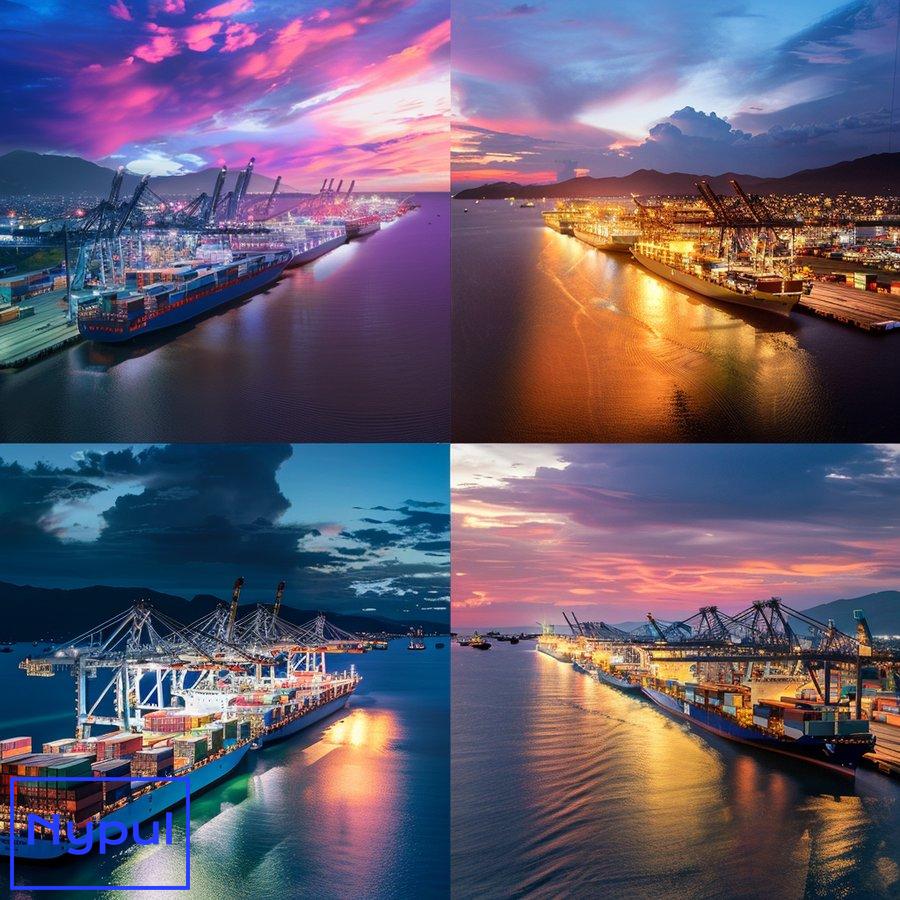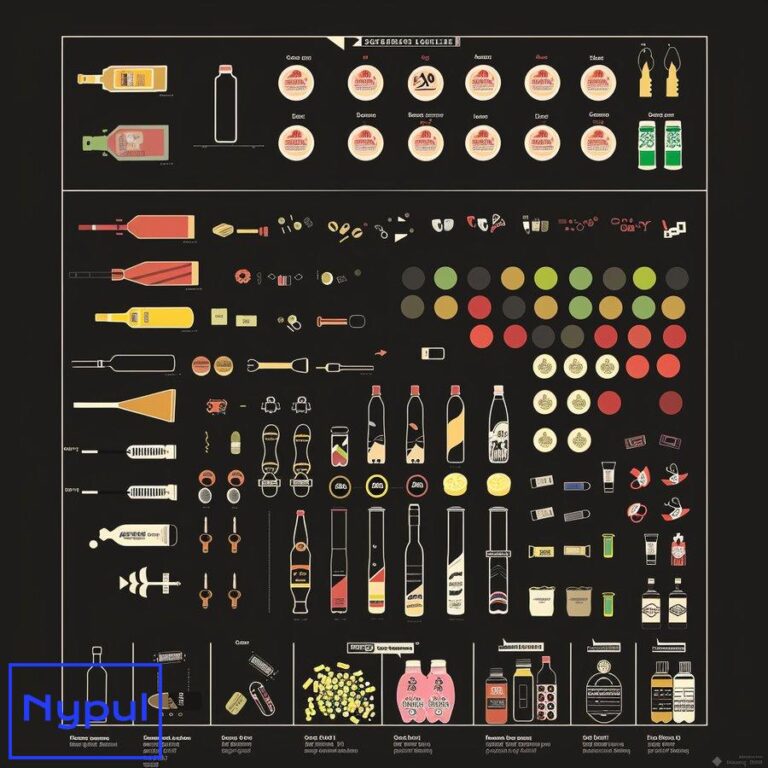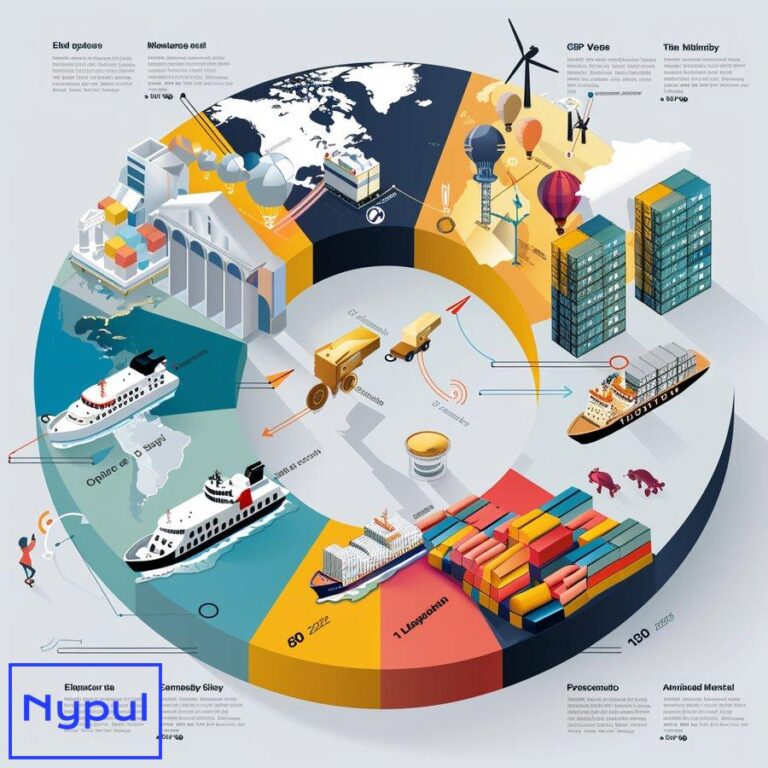What Is Harbor Drayage
Harbor drayage refers to the short-distance transportation of shipping containers and cargo between seaports and nearby destinations such as warehouses, distribution centers, or intermodal facilities. This critical logistics service bridges the gap between maritime shipping and land-based transportation, facilitating the movement of goods from ships to their next destination in the supply chain.
The term “drayage” originates from the word “dray,” a low, flat-sided cart used in the past to transport heavy loads over short distances. In modern logistics, harbor drayage has evolved to encompass a range of specialized trucking services that play a vital role in global trade and commerce.
Key characteristics of harbor drayage include:
Short-distance transport
Harbor drayage typically involves moving cargo within a 50-mile radius of a seaport. These short hauls connect maritime shipping with other modes of transportation or storage facilities.
Intermodal connectivity
Drayage services often link different modes of transportation, such as ships, trains, and long-haul trucks. This intermodal connectivity ensures smooth transitions between various stages of the supply chain.
Time-sensitive operations
Efficient harbor drayage is crucial for maintaining port productivity and preventing congestion. Timely movement of containers helps avoid delays and additional costs associated with port storage fees.
Specialized equipment
Harbor drayage requires specialized trucks and chassis designed to handle standardized shipping containers. These vehicles are equipped to safely transport heavy loads over short distances.
Regulatory compliance
Drayage operations must adhere to various regulations, including port authority rules, customs requirements, and transportation safety standards. Compliance ensures smooth and legal movement of goods.
Understanding harbor drayage is essential for businesses involved in international trade, logistics professionals, and anyone seeking to grasp the intricacies of global supply chains. As a critical link between sea and land transportation, harbor drayage plays a pivotal role in ensuring the efficient flow of goods from ports to their final destinations.
How does the harbor drayage process work?
The harbor drayage process involves a series of coordinated steps to move shipping containers and cargo from seaports to nearby destinations. This intricate operation requires careful planning, communication, and execution to ensure smooth transitions between maritime and land-based transportation. Let’s explore the key stages of the harbor drayage process:
Vessel arrival and unloading
The process begins when a cargo ship arrives at the port. Port workers use large cranes to unload containers from the vessel and place them in designated areas within the terminal.
Container release and documentation
Once unloaded, containers undergo customs clearance and other necessary paperwork. Shipping lines release the containers for pickup, providing relevant documentation to drayage companies or their representatives.
Drayage truck dispatch
Drayage companies assign trucks and drivers to collect specific containers from the port. Dispatchers provide drivers with essential information, including container numbers, pickup locations, and delivery destinations.
Port entry and container retrieval
Drayage trucks enter the port terminal, often through a designated gate system. Drivers locate their assigned containers and work with terminal staff to load them onto their chassis using specialized equipment like reach stackers or top loaders.
Container inspection and security checks
Before leaving the port, drivers conduct visual inspections of the containers to ensure they are in good condition and properly sealed. Security checks may also be performed to comply with port and customs regulations.
Transportation to destination
Drivers transport the containers to their designated destinations, which may include warehouses, distribution centers, rail yards, or other logistics facilities. This journey typically covers short distances within the port’s surrounding area.
Delivery and unloading
Upon arrival at the destination, the container is unloaded from the drayage truck. Depending on the arrangement, the driver may wait for the container to be emptied (live unload) or drop off the container for later retrieval (drop and hook).
Return trip and empty container management
After delivery, drayage trucks often return empty containers to the port or designated container yards. This process, known as container repositioning, helps maintain the balance of container inventory in the port area.
Documentation and reporting
Throughout the drayage process, various documents are exchanged and updated, including bills of lading, delivery orders, and proof of delivery. Many drayage companies use digital systems to track and manage these transactions.
The harbor drayage process requires seamless coordination between multiple parties, including shipping lines, port authorities, customs officials, drayage companies, and receiving facilities. Efficient execution of each step is crucial for maintaining the flow of goods and preventing bottlenecks in the supply chain.
To illustrate the typical timeline of a harbor drayage operation, consider the following table:
| Stage | Estimated Time |
|---|---|
| Vessel unloading | 1-3 days |
| Container release and documentation | 1-2 days |
| Drayage truck dispatch | 1-4 hours |
| Port entry and container retrieval | 1-3 hours |
| Transportation to destination | 1-4 hours |
| Delivery and unloading | 1-3 hours |
| Return trip and empty container management | 1-3 hours |
This timeline can vary significantly based on factors such as port congestion, customs clearance speed, and distance to the final destination. Efficient harbor drayage operations strive to minimize delays at each stage, ensuring timely delivery of goods and optimal use of resources.
What are the key components of harbor drayage?
Harbor drayage comprises several essential components that work together to facilitate the smooth movement of cargo from seaports to nearby destinations. Understanding these key elements is crucial for anyone involved in logistics, supply chain management, or international trade. Let’s examine the primary components of harbor drayage:
Drayage trucks
Specialized trucks designed for short-haul transportation of shipping containers. These vehicles are equipped to handle the weight and dimensions of standard intermodal containers.
Chassis
The trailer framework used to transport containers. Chassis come in various sizes to accommodate different container types, including 20-foot, 40-foot, and 45-foot containers.
Container handling equipment
Machinery used at ports and terminals to load and unload containers onto drayage trucks. This includes reach stackers, top loaders, and gantry cranes.
Drivers
Skilled professionals who operate drayage trucks and navigate the complex port environment. Drivers must possess specialized knowledge of port operations and safety procedures.
Dispatchers
Personnel responsible for coordinating drayage operations, assigning drivers to specific loads, and managing the flow of trucks in and out of port facilities.
Terminal operating systems
Software platforms used by ports to manage container movements, track inventory, and coordinate with drayage companies for efficient pickup and delivery.
Documentation and customs clearance
Essential paperwork and processes required for the legal movement of goods, including bills of lading, customs declarations, and delivery orders.
Port infrastructure
Physical facilities that support drayage operations, such as access roads, gates, parking areas, and container yards.
Communication systems
Technologies used to facilitate real-time information exchange between ports, drayage companies, and other stakeholders in the supply chain.
Regulatory compliance systems
Processes and tools used to ensure adherence to port regulations, customs requirements, and transportation safety standards.
These components work in concert to enable efficient harbor drayage operations. The integration of these elements is crucial for minimizing delays, reducing costs, and ensuring the timely movement of goods through the supply chain.
To illustrate the interconnectedness of these components, consider the following table showcasing the relationships between key harbor drayage elements:
| Component | Interacts With | Purpose |
|---|---|---|
| Drayage trucks | Chassis, Drivers, Port infrastructure | Transport containers |
| Chassis | Drayage trucks, Container handling equipment | Support and secure containers |
| Drivers | Drayage trucks, Dispatchers, Terminal operating systems | Operate vehicles and navigate port environment |
| Dispatchers | Drivers, Terminal operating systems, Communication systems | Coordinate drayage operations |
| Terminal operating systems | Dispatchers, Port infrastructure, Documentation and customs clearance | Manage container movements and inventory |
| Documentation and customs clearance | Terminal operating systems, Regulatory compliance systems | Ensure legal movement of goods |
This table demonstrates how each component of harbor drayage is intricately linked to others, forming a complex ecosystem that enables the efficient movement of goods from ships to their next destination in the supply chain.
What types of harbor drayage services are available?
Harbor drayage services come in various forms to meet the diverse needs of shippers, freight forwarders, and logistics providers. Each type of service addresses specific requirements in the movement of containers and cargo from seaports to nearby destinations. Let’s explore the main types of harbor drayage services available:

Port drayage
The most common form of harbor drayage, involving the transportation of containers from seaports to nearby warehouses, distribution centers, or intermodal facilities. This service ensures the timely movement of imported goods from ships to their next destination in the supply chain.
Inter-carrier drayage
This service involves moving containers between different transportation carriers. For example, transferring a container from a seaport to a rail yard for long-distance transportation by train.
Intra-carrier drayage
The movement of containers between facilities operated by the same carrier. This might include transferring containers between different terminals within a large port complex.
Expedited drayage
A premium service offering faster pickup and delivery of containers for time-sensitive shipments. Expedited drayage often involves dedicated trucks and priority handling at port facilities.
Shuttle drayage
The continuous movement of containers between two fixed points, such as a seaport and a nearby container yard or distribution center. This service helps manage container flow and reduce congestion at port terminals.
Door-to-door drayage
A comprehensive service that includes picking up containers from the port and delivering them directly to the final destination, such as a retailer’s warehouse or manufacturing facility.
Cross-dock drayage
This service involves transporting containers to a cross-dock facility where goods are quickly transferred from inbound to outbound trucks, minimizing storage time and facilitating efficient distribution.
Bonded drayage
The movement of containers that have not yet cleared customs. Bonded drayage services ensure the secure transport of goods to authorized bonded warehouses or customs examination facilities.
Overweight drayage
Specialized services for handling containers that exceed standard weight limits. This requires special permits, equipment, and routing to comply with road regulations.
Reefer drayage
The transportation of refrigerated containers, also known as reefers. This service maintains the cold chain for temperature-sensitive goods such as food products and pharmaceuticals.
To help visualize the application of these services in different scenarios, consider the following table:
| Drayage Service Type | Typical Use Case | Key Benefit |
|---|---|---|
| Port drayage | Importing consumer goods | Efficient movement from port to local warehouses |
| Inter-carrier drayage | Connecting sea and rail transport | Seamless intermodal transfers |
| Expedited drayage | Time-sensitive electronics shipments | Faster delivery for urgent cargo |
| Shuttle drayage | Managing high-volume container flows | Reduced port congestion |
| Door-to-door drayage | Direct delivery to retail stores | Simplified logistics for recipients |
| Bonded drayage | Imported goods awaiting customs clearance | Secure transport to bonded facilities |
| Reefer drayage | Importing fresh produce | Maintained temperature control |
Each type of harbor drayage service plays a crucial role in the supply chain, addressing specific logistical challenges and requirements. The availability of these diverse services allows shippers and logistics providers to tailor their transportation strategies to meet their unique needs, ensuring efficient and cost-effective movement of goods from seaports to their final destinations.
How is harbor drayage arranged and coordinated?
Arranging and coordinating harbor drayage involves a complex interplay of various stakeholders, systems, and processes. Efficient organization of drayage operations is crucial for maintaining smooth port operations and ensuring timely delivery of goods. Let’s explore the key aspects of how harbor drayage is arranged and coordinated:

Booking and scheduling
The process typically begins with shippers or freight forwarders booking drayage services. This involves providing details such as container numbers, pickup locations, delivery destinations, and required timeframes. Many drayage companies offer online booking systems or APIs for streamlined reservation processes.
Capacity planning
Drayage providers assess their available resources, including trucks, chassis, and drivers, to match capacity with demand. This often involves forecasting based on historical data and anticipated shipping volumes.
Port coordination
Drayage companies work closely with port authorities and terminal operators to coordinate container pickup times and locations. This may involve scheduling specific time slots for truck arrivals to manage port congestion.
Driver assignment
Dispatchers assign drivers to specific drayage tasks based on factors such as driver availability, expertise, and familiarity with particular port terminals or delivery locations.
Documentation management
Coordination of necessary paperwork, including customs documents, bills of lading, and delivery orders, is essential. Many drayage operations now use digital systems to streamline document processing and reduce errors.
Real-time tracking and communication
Modern drayage operations employ GPS tracking and mobile communication systems to monitor truck locations and provide real-time updates to all parties involved in the shipment.
Intermodal coordination
For shipments involving multiple modes of transport, drayage providers coordinate with rail operators, long-haul trucking companies, or air freight carriers to ensure smooth transitions between transportation modes.
Exception management
Systems and processes are in place to handle unexpected events such as port closures, traffic delays, or equipment breakdowns. This includes rerouting shipments or adjusting schedules as needed.
Performance monitoring
Drayage companies track key performance indicators (KPIs) such as on-time pickup and delivery rates, dwell times at ports, and equipment utilization to continuously improve their operations.
Billing and invoicing
Accurate tracking of services provided, including any additional charges for wait times or special handling, is crucial for timely and correct invoicing.
To illustrate the flow of information and responsibilities in harbor drayage coordination, consider the following table:
| Stage | Responsible Party | Key Actions |
|---|---|---|
| Booking | Shipper/Freight Forwarder | Submit drayage request with shipment details |
| Planning | Drayage Provider | Allocate resources and schedule pickup |
| Port Coordination | Drayage Provider/Port Authority | Arrange pickup time slot and location |
| Execution | Drayage Driver | Pickup container and transport to destination |
| Tracking | Drayage Provider | Monitor shipment progress and provide updates |
| Delivery | Drayage Driver/Recipient | Unload container at final destination |
| Invoicing | Drayage Provider | Generate and send invoice for services rendered |
Effective arrangement and coordination of harbor drayage require seamless communication and collaboration between all parties involved. The use of advanced technologies, such as transportation management systems (TMS) and port community systems, has greatly enhanced the efficiency of drayage operations.
These systems enable real-time information sharing, automated scheduling, and improved visibility throughout the drayage process. As a result, stakeholders can make more informed decisions, respond quickly to changes, and optimize the overall flow of goods through the supply chain.
What factors influence harbor drayage costs?
Harbor drayage costs can vary significantly based on a multitude of factors. Understanding these influences is crucial for shippers, logistics providers, and anyone involved in managing supply chain expenses. Let’s examine the key factors that impact harbor drayage costs:
Distance
The length of the trip from the port to the final destination is a primary cost determinant. Longer distances generally result in higher drayage fees due to increased fuel consumption and driver time.
![]()
Port congestion
High levels of port congestion can lead to increased wait times for trucks, resulting in additional charges for detention or demurrage. Ports with chronic congestion issues often have higher overall drayage costs.
Equipment type
The type of container and chassis required for the shipment affects costs. Specialized equipment, such as refrigerated containers or flatbeds for oversized cargo, typically incurs higher fees.
Fuel prices
Fluctuations in diesel fuel prices directly impact drayage costs. Many drayage providers implement fuel surcharges that adjust based on current fuel prices.
Labor costs
Driver wages and benefits are a significant component of drayage expenses. Areas with higher living costs or strong labor unions may have increased labor-related drayage charges.
Time of day
Peak hour traffic can lead to longer transit times and potentially higher costs. Some drayage providers offer off-peak services at lower rates to incentivize more efficient port utilization.
Seasonal demand
During peak shipping seasons, such as the pre-holiday period, drayage costs may increase due to higher demand for services and limited capacity.
Regulatory compliance
Costs associated with adhering to environmental regulations, such as clean truck programs or emissions standards, can be passed on to customers in the form of higher drayage rates.
Port fees
Various port-specific charges, such as terminal handling fees or gate fees, contribute to the overall cost of drayage## What factors influence harbor drayage costs?
(Continued from previous section)
To illustrate the impact of these factors on harbor drayage costs, consider the following table:
| Factor | Impact on Costs |
|---|---|
| Distance | Higher costs for longer distances |
| Port congestion | Increased charges due to wait times |
| Equipment type | Premium fees for specialized containers |
| Fuel prices | Fluctuating fuel surcharges |
| Labor costs | Higher wages in certain regions |
| Time of day | Potential surcharges for peak hour transit |
| Seasonal demand | Increased rates during peak shipping seasons |
| Regulatory compliance | Costs passed on for environmental regulations |
| Port fees | Additional charges levied by port authorities |
Understanding these cost drivers allows shippers to make informed decisions when selecting drayage providers and budgeting for transportation expenses. By optimizing factors within their control, such as container types and delivery schedules, shippers can help minimize drayage costs and improve the overall efficiency of their supply chain operations.
How does harbor drayage impact the overall supply chain?

Harbor drayage plays a crucial role in the overall supply chain, connecting maritime shipping with land-based transportation and facilitating the efficient movement of goods from ports to their final destinations. The impact of harbor drayage on the supply chain can be seen in several key areas:
Port productivity
Efficient drayage operations help maintain port productivity by ensuring timely pickup and delivery of containers. This minimizes congestion, reduces wait times for vessels, and enhances overall port efficiency.
Supply chain velocity
By expediting the movement of goods from ports to warehouses, distribution centers, or intermodal facilities, harbor drayage helps increase the velocity of the supply chain. Faster transit times lead to reduced inventory holding costs and improved responsiveness to customer demands.
Supply chain resilience
Drayage providers play a vital role in maintaining supply chain resilience by offering alternative transportation options and adapting to disruptions. For example, drayage services can help mitigate the impact of port closures or labor disputes by rerouting shipments or utilizing alternative modes of transportation.
Inventory management
Efficient drayage operations enable just-in-time inventory strategies by ensuring that goods arrive at their destination precisely when needed. This helps reduce storage costs and minimize the risk of product obsolescence or damage.
Sustainability
Many drayage providers are investing in eco-friendly technologies, such as alternative fuel vehicles and emission reduction programs, to improve the environmental sustainability of their operations. This aligns with the growing emphasis on green supply chain practices.
Compliance
Harbor drayage facilitates compliance with various regulations, including customs requirements, transportation safety standards, and environmental policies. By ensuring the legal and secure movement of goods, drayage services help maintain the integrity of the supply chain.
To illustrate the impact of harbor drayage on the overall supply chain, consider the following table:
| Supply Chain Aspect | Impact of Harbor Drayage |
|---|---|
| Port productivity | Maintains efficient port operations |
| Supply chain velocity | Expedites movement of goods |
| Supply chain resilience | Offers alternative transportation options |
| Inventory management | Enables just-in-time strategies |
| Sustainability | Supports eco-friendly practices |
| Compliance | Facilitates adherence to regulations |
As a critical link between maritime and land-based transportation, harbor drayage is essential for ensuring the smooth flow of goods through the supply chain. By optimizing drayage operations and collaborating with other supply chain partners, businesses can enhance their overall competitiveness and better serve their customers.
What challenges does the harbor drayage industry face?
The harbor drayage industry faces several challenges that impact its efficiency, profitability, and sustainability. Understanding these challenges is crucial for stakeholders, including drayage providers, shippers, and port authorities, to develop strategies for addressing them. Let’s explore the key challenges facing the harbor drayage industry:
Port congestion
Chronic port congestion is a significant challenge, leading to increased wait times, higher costs, and reduced productivity. Factors contributing to port congestion include insufficient infrastructure, labor shortages, and the growing volume of container traffic.
Driver shortages
The drayage industry, like the broader trucking sector, faces a shortage of qualified drivers. Factors such as an aging workforce, high turnover rates, and the physical demands of the job make it challenging to attract and retain drivers.
Regulatory compliance
Drayage providers must navigate a complex web of regulations, including environmental standards, safety requirements, and customs procedures. Failure to comply can result in hefty fines, delays, and reputational damage.
Equipment availability
Ensuring the availability of specialized equipment, such as chassis and refrigerated containers, is crucial for meeting customer demands. However, equipment shortages and imbalances can lead to delays and additional costs.
Pricing pressures
Intense competition and pressure from shippers to keep rates low can make it challenging for drayage providers to maintain profitability. This is exacerbated by rising costs for fuel, labor, and equipment.
Technology adoption
While technology is transforming the drayage industry, the pace of adoption varies among providers. Outdated systems and processes can hinder efficiency, visibility, and collaboration with other supply chain partners.
Sustainability concerns
Growing environmental awareness and regulations are driving the need for more sustainable drayage operations. Transitioning to alternative fuel vehicles and reducing emissions can be costly and logistically challenging for some providers.
To illustrate the impact of these challenges on the harbor drayage industry, consider the following table:
| Challenge | Impact on Drayage Operations |
|---|---|
| Port congestion | Increased wait times and costs |
| Driver shortages | Reduced capacity and productivity |
| Regulatory compliance | Potential delays and penalties |
| Equipment availability | Disruptions in container movement |
| Pricing pressures | Reduced profit margins |
| Technology adoption | Inefficiencies and lack of visibility |
| Sustainability concerns | Higher operating costs and compliance risks |
Addressing these challenges requires a collaborative effort among all stakeholders in the supply chain. Strategies may include investing in port infrastructure, implementing driver retention programs, adopting advanced technologies, and exploring sustainable transportation solutions. By working together to overcome these challenges, the harbor drayage industry can enhance its efficiency, profitability, and resilience in the face of evolving market demands and regulatory requirements.
How is technology transforming harbor drayage operations?
Technology is playing an increasingly important role in transforming harbor drayage operations, enabling greater efficiency, visibility, and collaboration among stakeholders. From automated gate systems to real-time tracking and analytics, the adoption of technology is revolutionizing the way drayage services are delivered. Let’s explore some of the key technologies shaping the future of harbor drayage:
Automated gate systems
Port terminals are implementing automated gate systems to streamline the entry and exit of drayage trucks. These systems use technologies such as optical character recognition (OCR) and radio-frequency identification (RFID) to quickly identify containers and process trucks, reducing wait times and improving overall efficiency.
GPS tracking and telematics
Drayage providers are increasingly relying on GPS tracking and telematics systems to monitor the location and performance of their trucks in real-time. This data enables better route optimization, improved driver safety, and enhanced visibility for customers.
Transportation management systems (TMS)
Advanced TMS platforms are helping drayage companies optimize their operations by automating tasks such as dispatch, billing, and performance reporting. These systems also facilitate collaboration with other supply chain partners, enabling seamless information sharing and decision-making.
Blockchain technology
The use of blockchain technology in harbor drayage is gaining traction, as it offers a secure and transparent way to manage documentation, track shipments, and facilitate payments. By creating a shared, immutable record of transactions, blockchain can help reduce errors, streamline processes, and enhance trust among supply chain partners.
Artificial intelligence and machine learning
AI and machine learning algorithms are being applied to drayage operations to improve forecasting, optimize resource allocation, and identify potential bottlenecks. These technologies can analyze vast amounts of data to uncover patterns and insights that help drayage providers make more informed decisions and enhance their overall performance.
Internet of Things (IoT)
The integration of IoT devices, such as sensors and smart devices, is enabling real-time monitoring and optimization of drayage operations. For example, sensors can track the condition of containers, monitor fuel consumption, and detect potential equipment failures, allowing for proactive maintenance and improved asset utilization.
Autonomous vehicles
While still in the early stages of development, autonomous vehicles have the potential to revolutionize harbor drayage operations by reducing labor costs, improving safety, and enhancing efficiency. As this technology matures, it could lead to significant changes in the way drayage services are delivered and the skills required of drivers.
To illustrate the impact of these technologies on harbor drayage operations, consider the following table:
| Technology | Impact on Drayage Operations |
|---|---|
| Automated gate systems | Reduced wait times and improved efficiency |
| GPS tracking and telematics | Enhanced visibility and route optimization |
| Transportation management systems | Streamlined operations and improved collaboration |
| Blockchain technology | Secure documentation and transparent transactions |
| Artificial intelligence and machine learning | Optimized resource allocation and improved forecasting |
| Internet of Things (IoT) | Real-time monitoring and proactive maintenance |
| Autonomous vehicles | Potential for reduced labor costs and improved safety |
As the harbor drayage industry continues to embrace technological advancements, we can expect to see significant improvements in efficiency, productivity, and customer service. However, the successful implementation of these technologies will require ongoing investment, training, and collaboration among all stakeholders in the supply chain.






